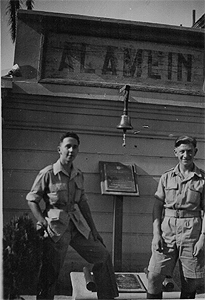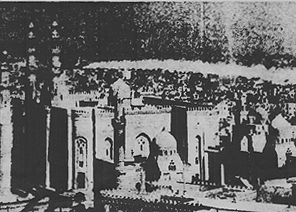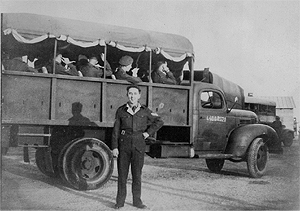CAIRO CHOLERA OUTBREAK - 1947
As Remembered By George Penman
As Chief Clerk of G (Ops) Branch GHQ MELF, I was always aware of the presence
of New Zealand soldiers whose base at El Maadi became a second home. It was
to this camp that the men of the 1st Echelon were transported in 1940 to reinforce
the defence of Egypt against Romell's army. Little wonder that the many Britiah
soldiers were to be eternally grateful that the camp had been maintained when
a panademic of cholera was detected in late September 1947, for the swift action
of the British to utilize the camp as an isolation base enabled the British
forces to spend a safe quarantine until the battle with cholera was won.
The total number of cholera victims was 20,804 detected with 10,277 deaths;
the total fatality rate was therefore around 50%. Immediate innoculationat the
start of the epidemic was slow due to the shortage of vaccine but once supplies
had been obtained from abroadm immunization throughout Egypt was complete in
a comparatively short time. At first there was an element of panic which even
spread to the Egyptian government and when, on the 31st October, another 442
victims were declared and there was nothing to indicate the spread of infection
was being checked, the Egyptian government considered the imposition of martial
law throughout the country. The government also banned funeral processions and
all victims had to be buried immediately.
There was a trail of smoke over the rooftops of Cairo as low flying aeroplanes
sprayed the city with a DDT preparation against the spread of cholera by flies.
The extra high flooding of the Nile and the primitive nature of the Cairo drains
resulted in the spread of sewage into theNile. It is interesting to observe
that cholera prevalence as measured by morbidity-rates coincides very closely
in distribution and severity of infection with sanitation. The disease fails
to establish itself in any of the towns provided with satisfactory sanitary
accommodation.
For the "residents" of El Maadi, the arrangements were for B and
B and evening meal. Meals were taken with utensils taken from a solution of
potassium permanganate. Footwear was treated with chlorine solution. After breakfast
and ablutions we waited for the "bus" to take us to work - a five
ton army lorry which wound its way through Old Cairo and so onto work, a process
which was reversed in the evening. Personally, I enjoyed the daily trips through
the old city observing the rooftops and the Citadel and other sites, now tourist
attractions.
Bread was supplied from a Field Bakery, efficiently run by WO James Weatherspoon
who, upon demob set up a chain of bakeries in his native Fife. Bread was only
provided in toasted form, a cholera required restriction. With "Payday
Parade" reducing baker numbers, James hit upon a version of the Scotch
Pie as a way of having a prepared meal which only needed reheating. This quickly
became known as a "Maadi Pie" which was enjoyed by all.
The camp residents quickly adjusted to the new routine and I enjoyed the daily
commute to Cairo. When the battle with cholera was won it was back to the Maared
barracks where we were accommodated in the pavilions of a former agricultural
exhibition. Opposite the barracks were the luxuries of the sporting facilities
of the appropriately named El Alamein club. Provided were football, tennis,
squash and the luxury of an outdoor swimming pool.
I was one of the fortunate British service personnel who filled the Alamein
club stands to watch the final game played there before the historic club was
handed over to the Egyptian government. The occasion was the British services
-v- Egypt services for the Alamein Cup. King Farouk's representative presented
the cup to the Egyptian captain who was man-of-the-match in a game in which
the British services wer outplayed 8-0 by a team which was well trained and
coached and was really the Egyptian National Team.
The former Maared barrack site is now occupied by the Cairo Opera House.
NO BRITISH TROOPS DIED DURING THE CHOLERA OUTBREAK.
|

At Maadi from where we were transported daily to work
in Cairo after an outbreak of cholera was claiming hundreds of lives
daily.
|
At Maadi with the 5 ton "bus" which
transported us daily to work in Cairo. We returned each day in time
for our evening meal
|
|

Posing in front of the Alamein Plaque & Bell at
the entrance to the Alamein Club - just opposite our billets - now
the site of the Opera House
|

Plane sprays Cairo with DDT to check cholera -
A trail of fog over the roofs of Cairo as a
low-flying plane sprays the city with DDT preparation as one of
the precautions against the spread of the cholera epidemic by
flies
|
Back
to Cholera & Typhoid
Back to Incidents
Back to Main Page



